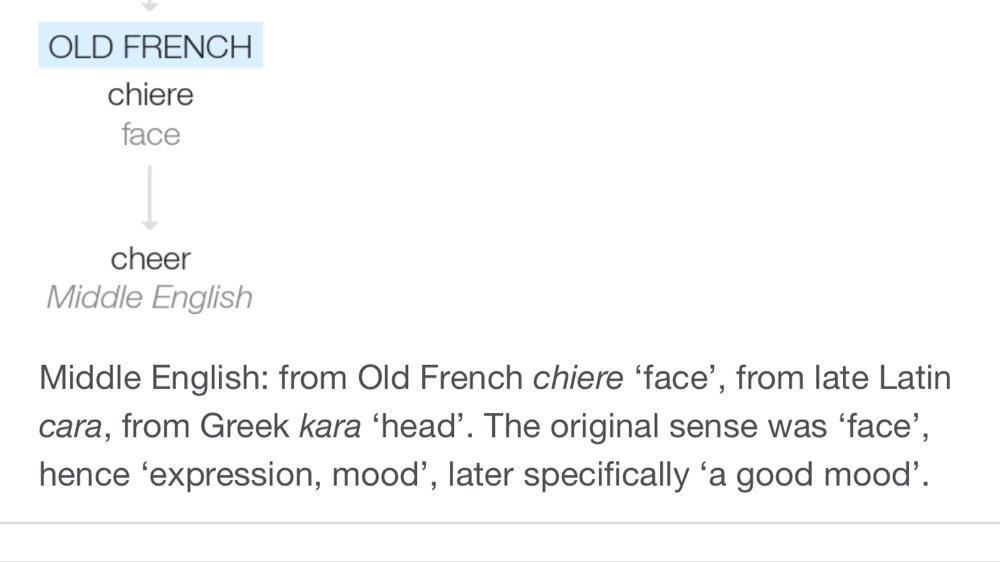The Relationship Of “Cheer” And Face
This trajectory of cheerfulness through the self is linked to the history of the word “cheer” itself. “Cheer” comes from an Old French word that means, simply, “face”. The term comes into English and spreads through medieval culture in the 14th century. In Geoffrey Chaucer’s Canterbury Tales (1387-1400), for example, people are depicted as having a “piteous cheer” or a “sober cheer”. “Cheer” is an expression, but also a body part. It lies at the intersection of our emotions and physiognomy.
24
134 reads
CURATED FROM
IDEAS CURATED BY
A cheery mood, we might think, is a terribly self-absorbed response to serious times. But history tells us otherwise.
“
The idea is part of this collection:
Learn more about problemsolving with this collection
Effective note-taking techniques
Test-taking strategies
How to create a study schedule
Related collections
Read & Learn
20x Faster
without
deepstash
with
deepstash
with
deepstash
Personalized microlearning
—
100+ Learning Journeys
—
Access to 200,000+ ideas
—
Access to the mobile app
—
Unlimited idea saving
—
—
Unlimited history
—
—
Unlimited listening to ideas
—
—
Downloading & offline access
—
—
Supercharge your mind with one idea per day
Enter your email and spend 1 minute every day to learn something new.
I agree to receive email updates
